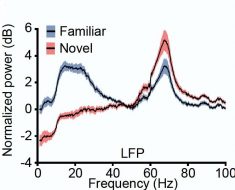A New York hospital was able to reduce the incidence of medical device-related pressure injuries (MDRPIs) following a tracheostomy to zero for four years, according to a study published in AACN Advanced Critical Care.
"Reducing Tracheostomy Medical Device-Related Pressure Injury: A Quality Improvement Project" details how NewYork-Presbyterian Westchester, Bronxville, achieved the results in its 18-bed adult intensive care unit (ICU), in part by integrating MDRPI prevention into the bedside procedure for tracheostomies that used the percutaneous dilation technique (PDT).
The intervention used evidence-based resources from the Preventing Pressure Injuries Toolkit funded by the Agency for Healthcare Research and Quality, part of the U.S. Department of Health and Human Services.
A key part of the new clinical process was a revised PDT tracheostomy procedural kit and documentation, with a polyurethane foam dressing placed under the tracheostomy flange during insertion and both secured with sutures and a flexible holder. The foam dressing remained in place for seven days, with primary care nurses assessing the site at least every 12 hours. The dressing was then changed to a standard nonwoven gauze drain sponge after seven to 10 days as clinically indicated.
The results showed that suturing a foam dressing as part of PDT tracheostomy insertion can reduce the incidence of associated MDRPIs.
The authors are Hazel Holder, DNP, MSN, RN, ACCNS-AG, CCRN, and Brittany "Ray" Gannon, PhD, MSN, AGPCNP-BC. Holder is a critical care clinical nurse specialist, NewYork-Presbyterian Westchester, and Gannon is a nurse scientist at NewYork-Presbyterian Hospital, New York City.
When COVID-19 increased demand for healthcare equipment, we were able to refine our processes, transition to a revised PDT tracheostomy kit and maintain the integrity of the initiative. We took a multidisciplinary approach that engaged all related specialties, with surgical site assessment and any clinician concerns discussed during daily rounds."
Hazel Holder, DNP, MSN, RN, ACCNS-AG, CCRN
Prior to the initiative, in 2018, the incidence of healthcare-associated pressure injuries (HAPIs) was 1.39% for all ICU patients, with tracheostomy MDRPIs accounting for 0.19% of the incidents (15 HAPIs, including two MDRPIs in 1,077 patients). However, of the two PDT tracheostomies performed, both patients experienced MDRPIs.
In 2019, the overall HAPI incidence decreased to 1.30%, with nine tracheostomies and no MDRPIs. The tracheostomy MDRPI incidence remained at zero for the next three years.
During the four years of this project, a total of 22 PDT tracheostomies were performed in the ICU, with the foam dressing placed at the point of insertion in all procedures.
The project was conducted in tandem with another unit-based program to address the overall rate of unit-acquired HAPIs, which may have contributed to increased vigilance.
AACN Advanced Critical Care is a quarterly, peer-reviewed publication with in-depth articles intended for experienced critical care and acute care clinicians at the bedside, advanced practice nurses, and clinical and academic educators. Each issue includes a topic-based symposium, feature articles and columns of interest to critical and progressive care clinicians.
American Association of Critical-Care Nurses
Holder, H., et al. (2022) Reducing Tracheostomy Medical Device-Related Pressure Injury: A Quality Improvement Project. AACN Advanced Critical Care. doi.org/10.4037/aacnacc2022874.
Posted in: Medical Research News | Healthcare News
Tags: covid-19, Critical Care, Health and Human Services, Healthcare, Hospital, Intensive Care, Nursing, Primary Care, Research, Tracheostomy
Source: Read Full Article





